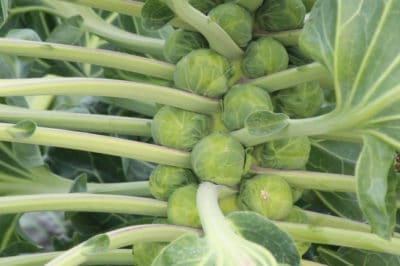What Are Brussels Sprouts?
Brussels sprouts are a cold-weather vegetable that resembles a tiny, golf-ball-sized cabbage. In fact, Brussels sprouts are a type of wild cabbage, and their taste is similar to the domestic cabbage you might grow in your garden.
Unlike cabbage, though, the Brussels sprout plant does not grow in a single head. Instead, each little sprout grows off of a long stalk, and you can pick them from the bottom, and the plant continues to produce more shoots at the top.
How to Grow Brussels Sprouts
If you want to try growing Brussels sprouts in your garden, the only thing you need to be sure of is that you have enough patience to tend them throughout the growing season. The plants require a long time to mature, so it is best to make sure you have the time to care for them before you plant them.
Since Brussels sprouts, like cabbage, are a cold-weather crop, there are several things you should know in order to improve your harvest.
- For colder areas with a shorter growing season (USDA Zones 1-5), start Brussels sprouts indoors at least six weeks before transplanting outdoors.
- Brussels sprouts can be seeded directly outdoors in USDA Zones 6-8.
- Plan on a minimum of three months before you can harvest sprouts.
- Fertilize the plants at least twice per season, as Brussels sprouts are a heavy feeder.
Tip: You can plant Brussels sprouts twice per season, once in the early spring and again in the late summer. Like cabbage, Brussels sprouts taste better after a few light touches of frost.
Harvesting Brussels Sprouts
Your plants are ready to harvest when the sprouts are about as big as a golf ball and feel firm when you squeeze them. One of the best things about growing Brussels sprouts is that the bottom sprouts are ripe first, and you can pick and eat them while the plant is still developing and producing shoots.
If you plant Brussels sprouts both in spring and late summer, you can easily ensure that you will have fresh Brussels sprouts long after your other garden plants have been harvested.
